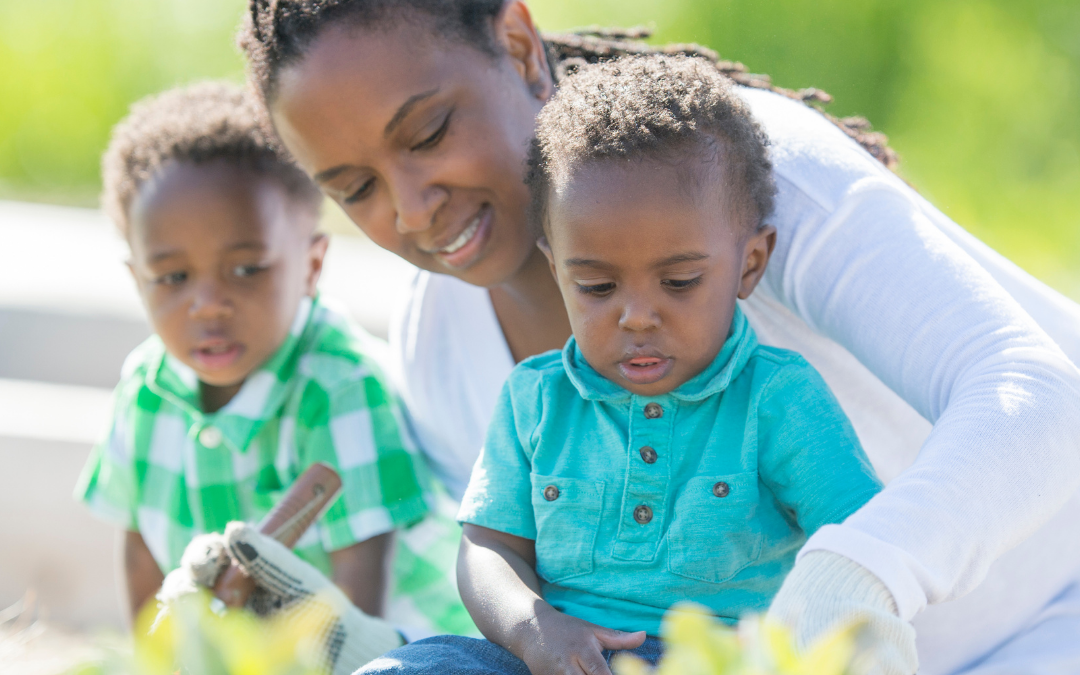Kids Gardening by Gail Goldspiel
My grandmother always kept a colorful, lively, full garden filled with rocks and stepstones, flowers and plants. My mother also kept a garden and for both, growing up, I helped them tend to the gardens, planting the flowers and watering the soil. While it was quite unique, it was no surprise that one of my first words was: flower.
Seeing all the gardens and flowers popping up now as we’ve reached spring, I couldn’t help but think back to my early days with gardening and reflect on how gardening can be such an educational and meaningful activity for young children. Often today, just walking around, I’ve even seen toddlers helping their parents weed and water, and take great delight in all the colorful plants and flowers before them.
So, what is it that gardening can offer young children and how can we find ways to encourage this activity, even at an early age?
Educators, botanists and psychologists alike, all agree on the benefits of gardening for young children, emphasizing the ways it can help develop motor skills, language, communication and social and emotional development. As educators John Nimmo and Beth Hallet of the Child Study and Development Center at the University of New Hampshire emphasizes, the garden is, among many things, a place for play and inquiry, taking safe risks, and developing community and relationships. As they write in their article, Childhood in the Garden,
“We view the garden as a play environment in which children can create new worlds that use the sensory elements of the natural environment to shape drama and fantasy. It is a place to simply be…Whether in a rural or urban setting, the surprises of the plant world can provoke a child’s curiosity and desire to investigate.”
Watching the garden and plant world spark a child’s curiosity, is something that from an educator’s standpoint, is truly rewarding. When I worked in a first-grade classroom years ago, I created a science table that featured plants as well as mealworms. Watching the students become young scientists who investigated and tracked the mealworms with magnifying glasses, journals and sketches was unforgettable. Years before that, when I worked for a summer at a community garden, I watched as children were inspired and engaged in creating art from the color in flower petals! All these years later, the innate creativity in children still astounds me and definitely inspires my own.
For older children, gardening can definitely inspire the scientific process and curiosity about the intricacies of our environment. Just by walking through a garden and observing, conversations and studies on photosynthesis, pollination, seed dispersion, compost and soil pH, to name a few, undoubtedly can blossom naturally and easily. I personally can’t think of a better way to teach science in such a hands-on and interactive way.
Either before or after garden time or when you’re just taking a break inside, for younger children especially, a great way to deepen the garden experience is through reading and stories. There’s a reason why there are hundreds of books for children of all ages, on gardens and the great outdoors. From The Secret Garden to Eric Carle’s The Tiny Seed, definitely incorporate read-aloud and literacy in sparking an appreciation of gardening.
For educator inspired book recommendations, here are two great lists: weareteachers.com/best-gardening-books-for-kids and pbs.org/parents/thrive/best-gardening-books-for-kids
And now that it’s April and National Poetry Month, make sure to incorporate poetry too! As William Blake once said, “To see a world in a grain of sand and heaven in a wildflower/ Hold infinity in the palm of your hand and eternity in an hour.”
If you are a nanny, you can learn more about creating positive learning environments in the Advanced Childcare program.


Recent Comments